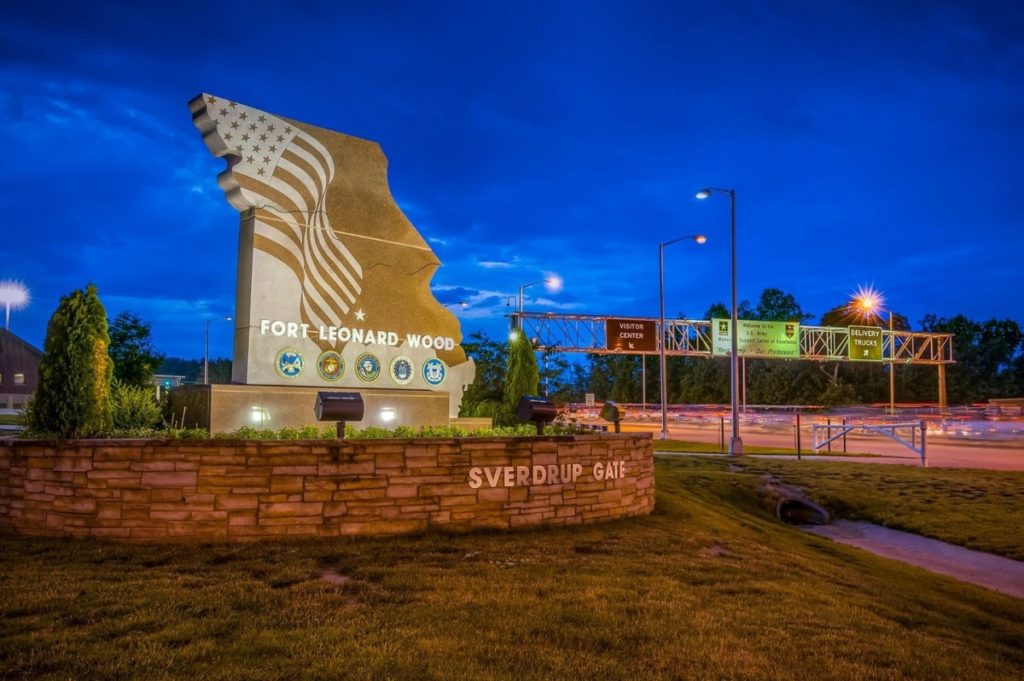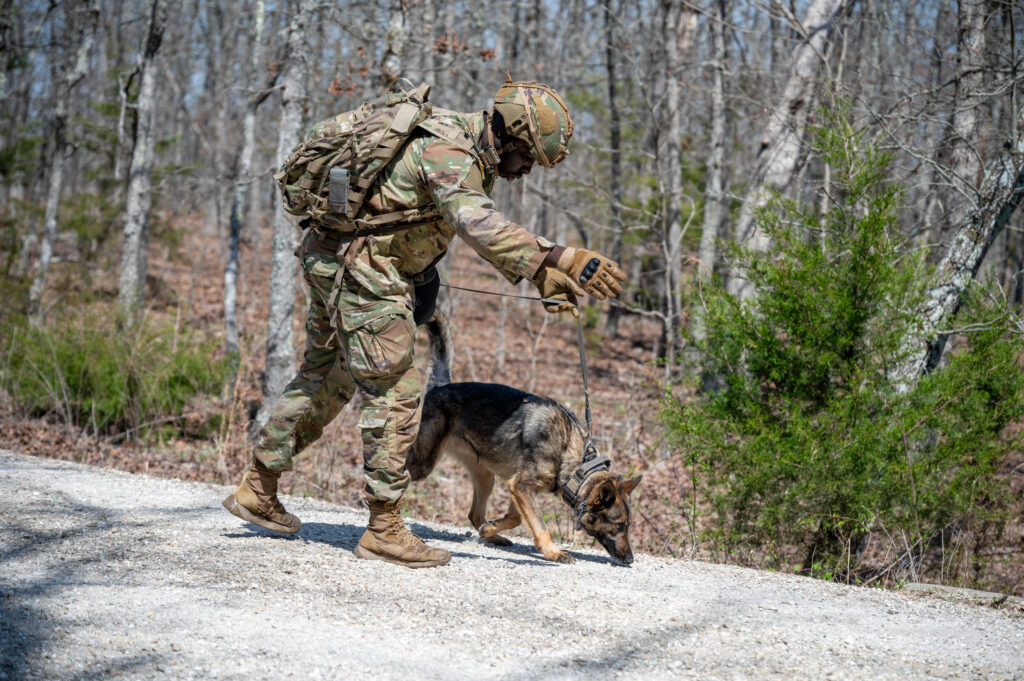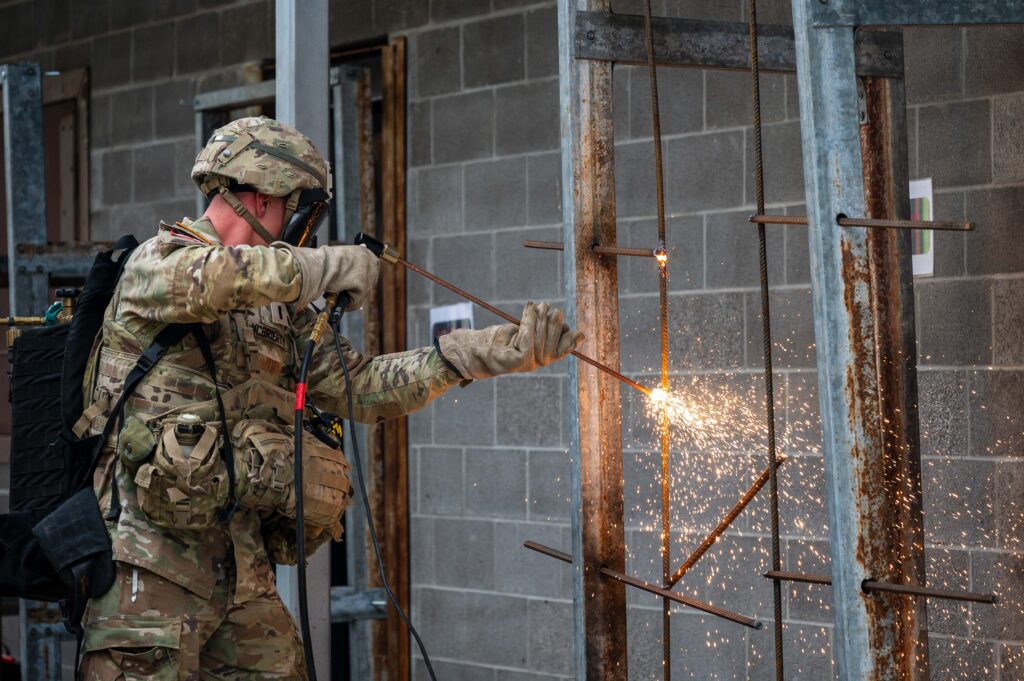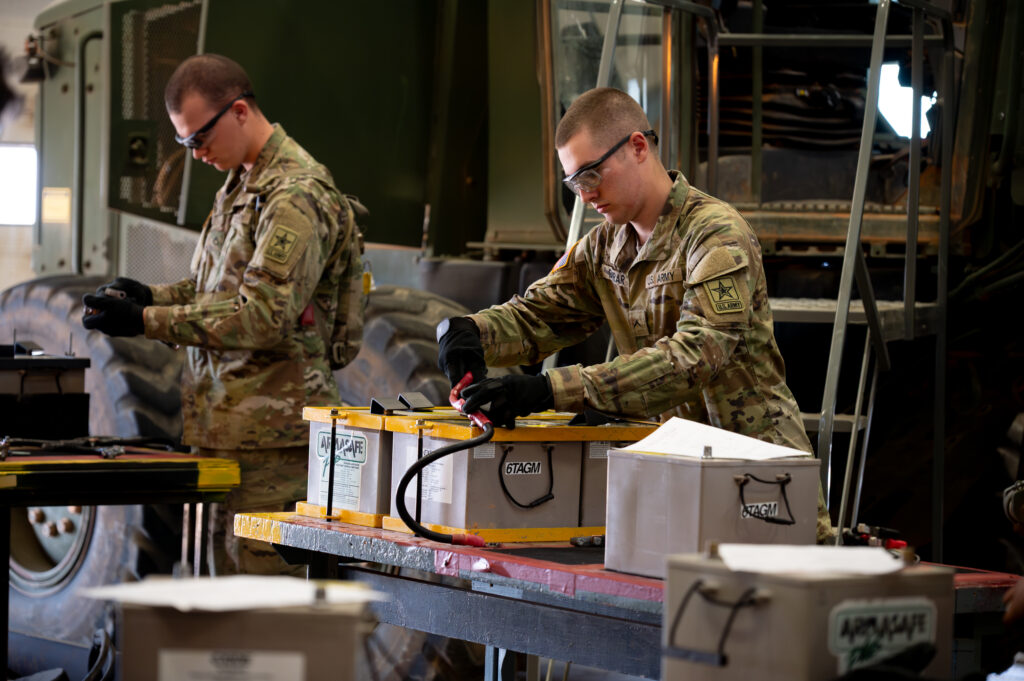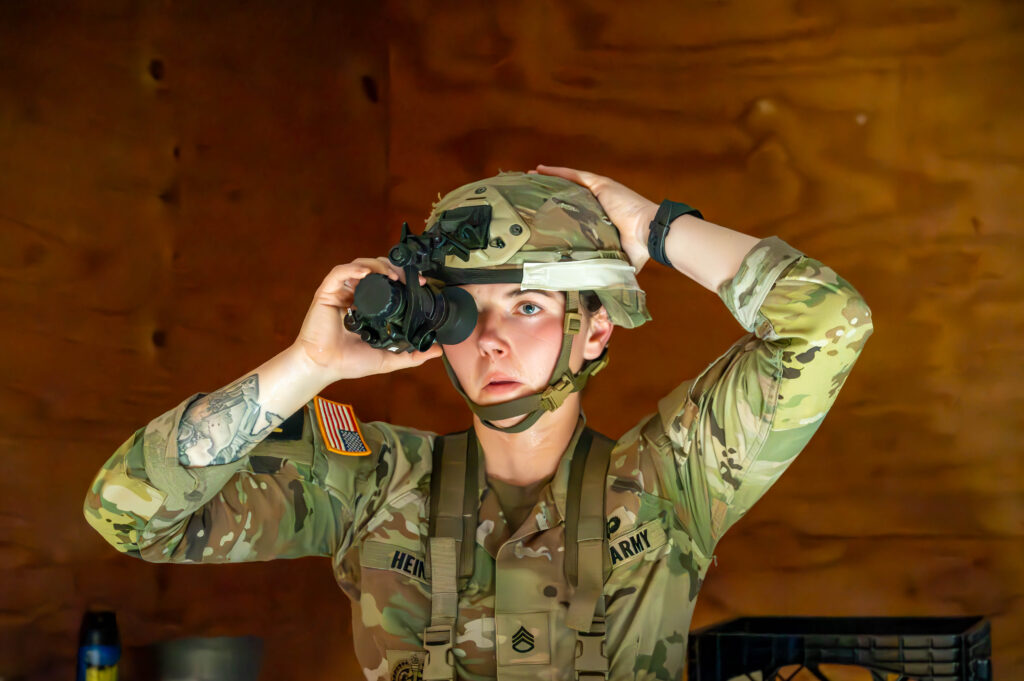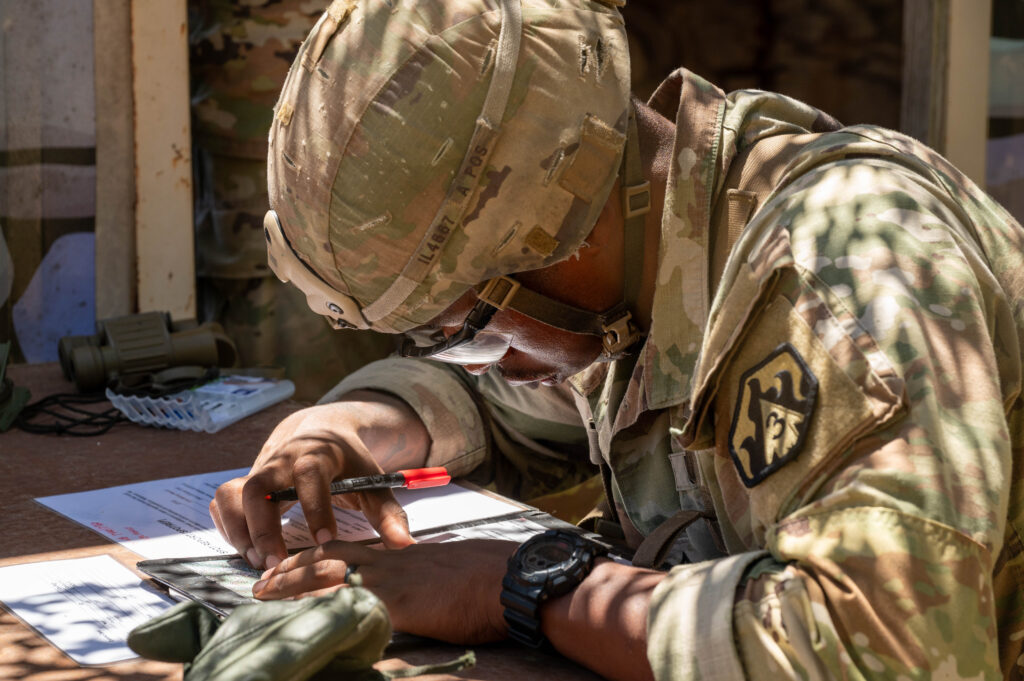By Sam Campbell
FORT LEONARD WOOD, Mo. (Jan. 22, 2019) — The U.S. Army Engineer School combined forces with the U.S. Army Military Police School and presented a virtual staff ride overview brief Tuesday at Fort Leonard Wood’s Digital Training Facility. The objective of the brief was to discuss the future utilization of Large-Scale Combat Operations VSRs, such as the newly developed World War II Stalingrad and Korean War Chipyong-ni VSR.
The briefing was attended by doctrine analysts, training and curriculum developers and leaders from the Basic Officer Leader Course, Captains Career Course, Engineer Warrant Officer Basic Course, Engineer Warrant Officer Advanced Course, Engineer Prime Power School and current students of the Reserve Engineer Senior Leader Course.
VSRs are created in a digital 3D environment, which allows Soldiers to examine, analyze and discuss the effect terrain has on combat operations.
The VSR permits Soldiers to be taught in classrooms as opposed to traditional staff rides, which require physical travel to a battlefield, budget allocations and a fair allotment of time.
In addition to easing logistical concerns, a VSR enables aerial and first-person viewing of battlefields that no longer exist, that have been severely altered in their physical presence, or are currently too hazardous to visit, such as Afghanistan’s Waygal Valley.
According to Florian Waitl, USAES command historian, some historical recreations are more beneficial for one branch than the other due to the nature of the operations and discussions of the historical events being presented to the students.

“Engineers like to take a closer look at historical mobility and countermobility operations, while MPs are interested in route reconnaissance or convoy security operations,” he said. “One of the VSRs offered is the Palm Sunday Ambush, which can be seen as the hallmark VSR of the MP Corps due to the actions of Staff Sgt. Timothy Nein and Sgt. Leigh Ann Hester during an insurgent ambush on a U.S. convoy in Iraq on March 20, 2005. The MP Soldiers’ actions are discussed in detail during the VSR, which not only resulted in saving countless lives but also resulted in Hester being the first woman since World War II to receive a Silver Star and the first woman ever to be cited for heroism in close quarters.”
Waitl said each school has different needs and goals during the infused history lessons but the change from counterinsurgency to large-scale combat operations really brought the two schools’ historians together to find better historical battles to prepare today’s warfighter — engineers and military police Soldiers.
“We really want to tailor the new staff rides to all of our needs, which is the reason why we invited such a broad front of educators from both schools,” he said.
Waitl said by looking at Chipyong-ni and Stalingrad as the possible standard for future virtual staff rides in the classroom, they will be able to add the discussion of the evolution of doctrine and help the students understand the reasons for some of the Army’s “modern doctrine.”
“That is something you will not get out of a Wilson’s Creek Staff Ride,” he said.
Although staff rides to Civil War battlefields are beneficial, Waitl said VSRs offer a different experience.
“The scale of the battle was obviously much smaller and the connection between a Civil War battle and the threats we face today against peer and near-peer competitors are just not easily conveyed as can be done by a modern VSR. Multi-domain operations is the future of warfare, and it seems if we reach back too far into our past history, too many students will get lost and will never reach the learning outcomes we would like them to achieve.”
Ron Miller, USAMPS command historian, agreed.
“The new VSRs are also more contemporary,” Miller said. “Aerial resupply — you didn’t have that in Wilson’s Creek.”
Waitl said educating engineers and military police side-by-side with the help of a VSR utilizing a historical LSCO battle is feasible and conceivable.
“With Chipyong-ni, we can really build an awesome product for both of our schools, which will be so much better than the traditional staff rides currently conducted on Civil War battlefields in the vicinity of Fort Leonard Wood,” Waitl said.
Miller echoed Waitl’s enthusiasm for the VSR’s versatility. “A lot of the lessons learned are applicable across the board, especially when it comes to leadership and decision-making.”
The virtual staff ride also allows instructors to adjust weather conditions to match significant historical circumstances, like the Korean War’s winter of 1951, or potential scenarios like maneuvering under heavy fog.
Despite its lower fiscal, time and logistical requirements, the virtual staff ride shares the ability with its traditional counterpart to affect Soldiers on a more visceral level than a map could.
“The leadership aspect, the human dimension, must be found in a staff ride, field or virtual, and it must hit the heart if you want to be successful and reach your students,” Waitl said.
The command historians said they look forward to the expansion of virtual staff rides.
###
About Fort Leonard Wood
Fort Leonard Wood is a thriving and prosperous installation that has evolved from a small basic training post more than 75 years ago to a premier Army Center of Excellence that trains more than 82,000 military and civilians each year.
Fort Leonard Wood is home to the U.S Army Maneuver Support Center of Excellence and three U.S. Army schools: the U.S. Army Engineer School; U.S. Army Chemical, Biological, Radiological, and Nuclear School; and the U.S. Army Military Police School. In addition to training engineer, CBRN and military police specialties for the Army, Fort Leonard Wood also provides gender-integrated in-processing and Basic Combat Training for new Soldiers.
Fort Leonard Wood also hosts and trains with the largest Marine Corps and Air Force detachments on any Army installation as well as a large Navy construction detachment.
More information about Fort Leonard Wood is at: https://home.army.mil/wood/index.php/about/mission.
